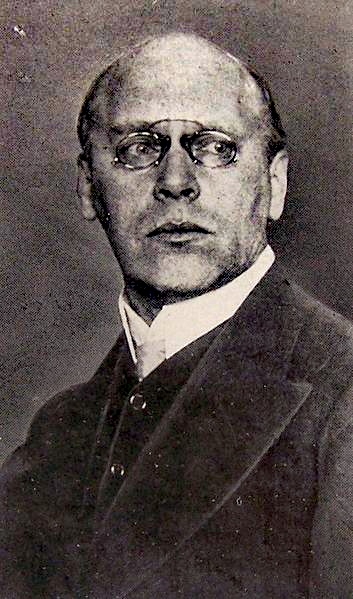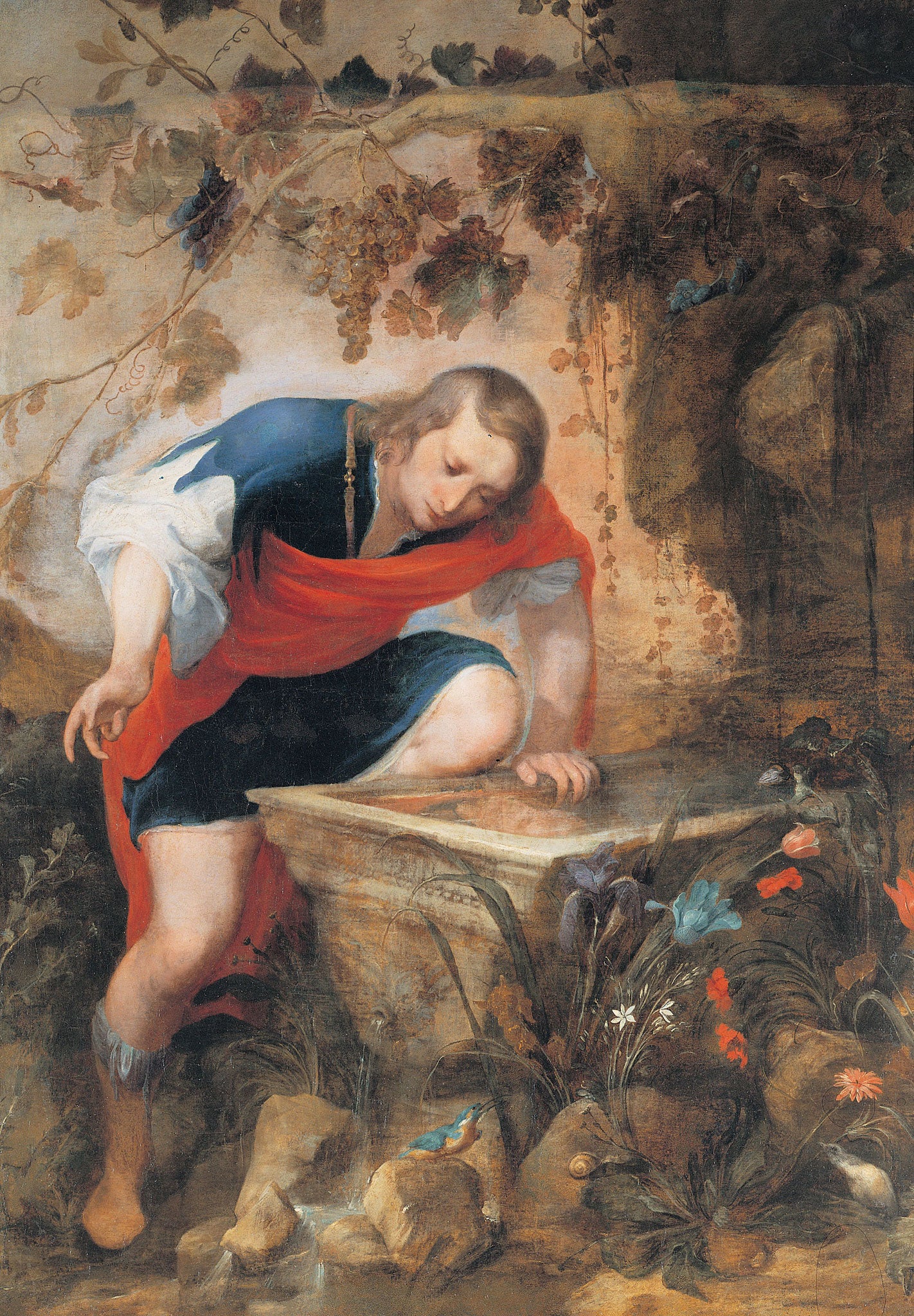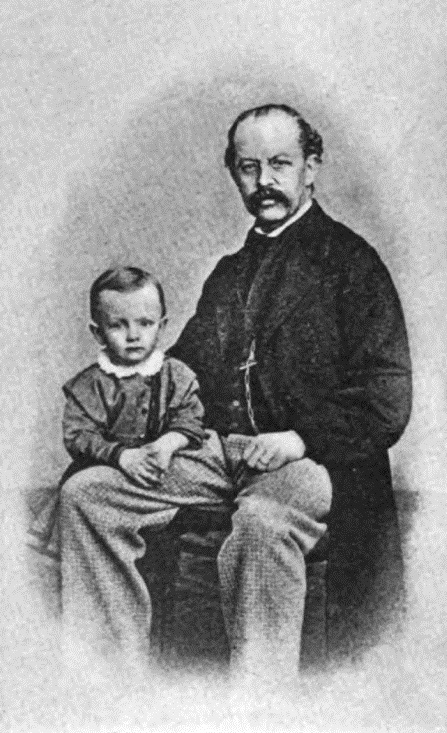|
Ludwig Von Hofmann
Ludwig von Hofmann (17 August 1861 – 23 August 1945) was a German painter, graphic artist and designer. He worked in a combination of the Art Nouveau and Symbolism (arts), Symbolist styles. His work was part of the Art competitions at the 1928 Summer Olympics#Painting, painting event in the Art competitions at the 1928 Summer Olympics, art competition at the 1928 Summer Olympics. Biography He was born in Darmstadt. His father was the Prussian statesman Karl von Hofmann, who served as Minister-president of the Grand Duchy of Hesse from 1872 to 1876 and was briefly Trade Minister in the cabinet of Otto von Bismarck. Ludwig began his studies in 1883 at the Dresden Academy of Fine Arts, then studied with Ferdinand Keller (painter), Ferdinand Keller at the Academy of Fine Arts, Karlsruhe. In 1889, he attended the Académie Julian in Paris, where he came under the influence of Pierre Puvis de Chavannes and Paul-Albert Besnard. After 1890, he was a freelance painter in Berlin. From ... [...More Info...] [...Related Items...] OR: [Wikipedia] [Google] [Baidu] |
Arcadia (utopia)
Arcadia ( gr, Αρκαδία) refers to a vision of pastoralism and harmony with nature. The term is derived from the Greek province of the same name which dates to antiquity; the province's mountainous topography and sparse population of pastoralists later caused the word ''Arcadia'' to develop into a poetic byword for an idyllic vision of unspoiled wilderness. Arcadia is a poetic term associated with bountiful natural splendor and harmony. The 'Garden' is often inhabited by shepherds. The concept also figures in Renaissance mythology. Although commonly thought of as being in line with Utopian ideals, Arcadia differs from that tradition in that it is more often specifically regarded as unattainable. Furthermore, it is seen as a lost, Edenic form of life, contrasting to the progressive nature of Utopian desires. The inhabitants were often regarded as having continued to live after the manner of the Golden Age, without the pride and avarice that corrupted other regions. I ... [...More Info...] [...Related Items...] OR: [Wikipedia] [Google] [Baidu] |
Narcissus (mythology)
In Greek mythology, Narcissus (; Ancient Greek: Νάρκισσος ''Nárkissos'') was a hunter from Thespiae in Boeotia (alternatively Mimas or modern day Karaburun, Izmir) who was known for his beauty. According to Tzetzes, he rejected all romantic advances, eventually falling in love with his own reflection in a pool of water, staring at it for the remainder of his life. After he died, in his place sprouted a flower bearing his name. The character of Narcissus is the origin of the term narcissism, a fixation with oneself. This quality, in turn, contributes to the definition of narcissistic personality disorder, a psychiatric condition marked by grandiosity, excessive need for attention and admiration, and an inability to empathize. Like the myth of Laius and Chrysippus, the myth of Narcissus is a Boeotian pederastic cautionary tale, a story meant to teach by counter-example. Etymology The name is of Greek etymology. According to R. S. P. Beekes, " e suffixes ισ� ... [...More Info...] [...Related Items...] OR: [Wikipedia] [Google] [Baidu] |
Pillnitz
Pillnitz is a quarter in the east of Dresden, Germany. It can be reached by bus, ship, walking along the river or by bicycle. Pillnitz is most famous for its Baroque palace and park, the Pillnitz Castle. Pillnitz Palace consists of the Riverside Palace (Wasserpalais) at the river, the parallel Upper Palace (Bergpalais) towards the hills and the linking building New Palace (Neues Palais). The first two were designed by Matthäus Daniel Pöppelmann. The buildings frame the Baroque inner garden; this entire ensemble is surrounded by a park. Pillnitz is known for the Declaration of Pillnitz of 1791: Emperor Leopold II and King Frederick William II of Prussia, urged by Charles X, then Comte d'Artois, declared that the French King Louis XVI was not to be harmed or deprived of power as a way to attack the progress of the French Revolution. Pillnitz is also a site of wine production. During the millennium flood of 2002 in Dresden, it was one of the most affected areas. See also *Pi ... [...More Info...] [...Related Items...] OR: [Wikipedia] [Google] [Baidu] |
Degenerate Art
Degenerate art (german: Entartete Kunst was a term adopted in the 1920s by the Nazi Party in Germany to describe modern art. During the dictatorship of Adolf Hitler, German modernist art, including many works of internationally renowned artists, was removed from state-owned museums and banned in Nazi Germany on the grounds that such art was an "insult to German feeling", un-German, Freemasonic, Jewish, or Communist in nature. Those identified as degenerate artists were subjected to sanctions that included being dismissed from teaching positions, being forbidden to exhibit or to sell their art, and in some cases being forbidden to produce art. ''Degenerate Art'' also was the title of an exhibition, held by the Nazis in Munich in 1937, consisting of 650 modernist artworks chaotically hung and accompanied by text labels deriding the art. Designed to inflame public opinion against modernism, the exhibition subsequently traveled to several other cities in Germany and Austria. While ... [...More Info...] [...Related Items...] OR: [Wikipedia] [Google] [Baidu] |
Gerhart Hauptmann
Gerhart Johann Robert Hauptmann (; 15 November 1862 – 6 June 1946) was a German dramatist and novelist. He is counted among the most important promoters of literary naturalism, though he integrated other styles into his work as well. He received the Nobel Prize in Literature in 1912. Life Childhood and youth Gerhart Hauptmann was born in 1862 in Obersalzbrunn, now known as Szczawno-Zdrój, in Lower Silesia (then a part of the Kingdom of Prussia, now a part of Poland). His parents were Robert and Marie Hauptmann, who ran a hotel in the area. As a youth, Hauptmann had a reputation of being loose with the truth. His elder brother was Carl Hauptmann. Beginning in 1868, he attended the village school and then, in 1874, the Realschule in Breslau for which he had only barely passed the qualifying exam. Hauptmann had difficulties adjusting himself to his new surroundings in the city. He lived, along with his brother Carl, in a somewhat run-down student boarding house before fin ... [...More Info...] [...Related Items...] OR: [Wikipedia] [Google] [Baidu] |
Leopold Ziegler
Leopold may refer to: People * Leopold (given name) * Leopold (surname) Arts, entertainment, and media Fictional characters * Leopold (''The Simpsons''), Superintendent Chalmers' assistant on ''The Simpsons'' * Leopold Bloom, the protagonist of James Joyce's ''Ulysses'' * Leopold "Leo" Fitz, a character on the television series ''Agents of S.H.I.E.L.D.'' * Leopold "Butters" Stotch, a character on the television series ''South Park'' * General Leopold von Flockenstuffen, a character in the BBC sitcom Allo 'Allo!'' * Leopold the Cat, Russian cartoon character Other arts, entertainment, and media * Leopold (prize), a biennial German prize for music for children * '' Kate & Leopold'', 2001 romantic comedy film * '' King Leopold's Ghost'', popular history book by Adam Hochschild * " King Leopold's Soliloquy", 1905 pamphlet by Mark Twain. * '' Leopold the Cat'', television series * Léopold Nord & Vous, Belgian musical band Brands and enterprises * Leopold (publisher), a Ne ... [...More Info...] [...Related Items...] OR: [Wikipedia] [Google] [Baidu] |
Odyssey
The ''Odyssey'' (; grc, Ὀδύσσεια, Odýsseia, ) is one of two major Ancient Greek literature, ancient Greek Epic poetry, epic poems attributed to Homer. It is one of the oldest extant works of literature still widely read by modern audiences. As with the ''Iliad'', the poem is divided into 24 books. It follows the Greek hero cult, Greek hero Odysseus, king of Homer's Ithaca, Ithaca, and his journey home after the Trojan War. After the war, which lasted ten years, his journey lasted for ten additional years, during which time he encountered many perils and all his crew mates were killed. In his absence, Odysseus was assumed dead, and his wife Penelope and son Telemachus had to contend with a Suitors of Penelope, group of unruly suitors who were competing for Penelope's hand in marriage. The ''Odyssey'' was originally composed in Homeric Greek in around the 8th or 7th century BCE and, by the mid-6th century BCE, had become part of the Greek literary canon. In Classic ... [...More Info...] [...Related Items...] OR: [Wikipedia] [Google] [Baidu] |
Ivo Hauptmann
Ivo is a masculine given name, in use in various European languages. The name used in western European languages originates as a Normannic name recorded since the High Middle Ages, and the French name Yves is a variant of it. The unrelated South Slavic name is a variant of the name Ivan (John). Origins The name is recorded from the High Middle Ages among the Normans of France and England (Yvo of Chartres, born c. 1040). The name's etymology may be either Germanic or Celtic, in either case deriving from a given name with a first element meaning "yew" (Gaulish ''Ivo-'', Germanic ''Iwa-'').Campbell, MikIvo(Behind the Name: The Etymology and History of First Names) The name may have been spread by the cult of Saint Ivo (d. 1303), patron saint of Brittany. The Slavic name is a hypocorism, like its variant ''Ivica''. Variations Ivo has the genitive form of "Ives" in the place name St Ives. In France, the usual variation of the name is Yves. In the Hispanic countries of Lat ... [...More Info...] [...Related Items...] OR: [Wikipedia] [Google] [Baidu] |
Jean Arp
Hans Peter Wilhelm Arp (16 September 1886 – 7 June 1966), better known as Jean Arp in English, was a German-French sculptor, painter, and poet. He was known as a Dadaist and an abstract artist. Early life Arp was born in Straßburg (now Strasbourg), the son of a French mother and a German father, during the period following the Franco-Prussian War when the area was known as Alsace-Lorraine (''Elsass-Lothringen'' in German) after France had ceded it to Germany in 1871. Following the return of Alsace to France at the end of World War I, French law determined that his name become "Jean". Arp would continue referring to himself as "Hans" when he spoke German. Career Dada In 1904, after leaving the École des Arts et Métiers in Straßburg, he went to Paris where he published his poetry for the first time. From 1905 to 1907, he studied at Kunstschule in Weimar, Germany, and in 1908 went back to Paris, where he attended the Académie Julian. Arp was a founder-member of the ... [...More Info...] [...Related Items...] OR: [Wikipedia] [Google] [Baidu] |
Harry Graf Kessler
Harry Clemens Ulrich Graf von Kessler (23 May 1868 – 30 November 1937) was an Anglo-German count, diplomat, writer, and patron of modern art. English translations of his diaries "Journey to the Abyss" (2011) and "Berlin in Lights" (1971) reveal anecdotes and details of artistic, theatrical, and political life in Europe, mostly in Germany, from the late 19th century through the collapse of Germany at the end of World War I until his death in Lyon in 1937. Family Harry Kessler's parents were the Hamburg banker Adolf Wilhelm Graf von Kessler (24 November 1838 – 22 January 1895) and Alice Harriet Blosse-Lynch (born 17 July 1844 in Bombay; died 19 September 1919 in Normandy), the daughter of Anglo-Irish Henry Blosse Lynch, C.B., of Partry House, County Mayo. Kessler's parents married in Paris on 10 August 1867; Kessler was born, also in Paris, in 1868. Kessler's younger sister was born in 1877, and was named Wilhelmina after Kaiser Wilhelm I, who became the child's godfather. ... [...More Info...] [...Related Items...] OR: [Wikipedia] [Google] [Baidu] |
Weimar Saxon Grand Ducal Art School
The Grand-Ducal Saxon Art School, Weimar (German:Großherzoglich-Sächsische Kunstschule Weimar) was founded on 1 October 1860, in Weimar, Germany, by a decree of Charles Alexander, Grand Duke of Saxe-Weimar-Eisenach. It existed until 1910, when it merged with several other art schools to become the ''Großherzoglich Sächsische Hochschule für Bildende Kunst'' ("Grand-Ducal Saxon School for Fine Arts"). It should not be confused with the Weimar Princely Free Drawing School, which existed from 1776 to 1930 and, after 1860, served as a preparatory school. History From 1870 to 1900, the students and teachers of the school turned away from the academic tradition of idealized compositions. Inspired by the Barbizon School, they went directly to nature for their inspiration, in genre as well as landscape painting. This approach set the school apart and attracted attention throughout Europe. Grand-Ducal Saxon School for Fine Arts, Weimar In 1910, William Ernest, Grand Duke of Saxe-W ... [...More Info...] [...Related Items...] OR: [Wikipedia] [Google] [Baidu] |


.jpg)




